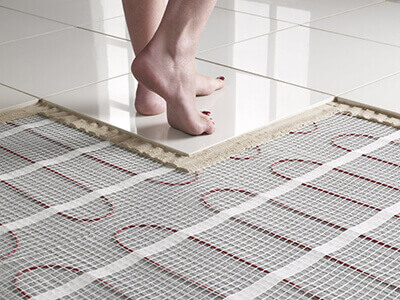We are offer several kinds of heating options...
Sometimes homes have either a furnace or boiler as their heating source.
Boilers basically heat water or steam water for heating. Steam is distributed by pipes that are connected to steam radiators, and hot water can be connected to a baseboard radiator or, they can also heat air via a coil.
There different types of furnaces and boilers, ranging from older versus newer ones.
Maintaining Your Boiler or Furnace
A boiler or furnace can be retrofitted to increase its efficiency. However, the cost of an old system versus installing new system should be taken into account… Especially if you’ll just be replacing the system in 3-5 years.
For both furnaces and boilers, it’s better to schedule professional maintenance annually before the heating season begins. Unfortunately, that doesn’t usually happen.
If you do want to keep your boiler or furnace going, we recommend these options:
- Check the condition of your vent connection pipe and chimney. Parts of the venting system may have deteriorated over time. Chimney problems can be expensive to repair, and may help justify installing new heating equipment.
- The physical integrity of the heat exchanger: boiler heat exchangers may leak water and are easy to spot. Furnace heat exchangers mix combustion gases with house air when they leak—an important safety reason to have them inspected.
- If you’re considering replacing or retrofitting your existing heating system, have us perform a combustion-efficiency test.
Hydronic and Steam Heating
Hydronic and steam heating, or radiant floor heating, circulates heated liquids in a network of plastic tubing beneath your floorboards, baseboards, and radiators, resulting in heat that radiates evenly throughout your home. While traditional heating systems rely on air circulation to distribute heat through a room, hydronic heating produces uniform and regular heating for the comfort of your family.
Hydronic and steam heating, or radiant floor heating, circulates heated liquids in a network of plastic tubing beneath your floorboards, baseboards, and radiators, resulting in heat that radiates evenly throughout your home. While traditional heating systems rely on air circulation to distribute heat through a room, hydronic heating produces uniform and regular heating for the comfort of your family.

THE BENEFITS OF HYDRONIC AND STEAM HEATING SYSTEMS ARE NUMEROUS, INCLUDING:
- Energy efficiency, resulting in monthly savings
- Reduced circulation of dust, allergens, and other irritants
- Comfortably warm floor surfaces during cold snaps
- Freedom from the loud noises and drying effects of traditional heating systems
- Personalized temperature zones throughout the home



